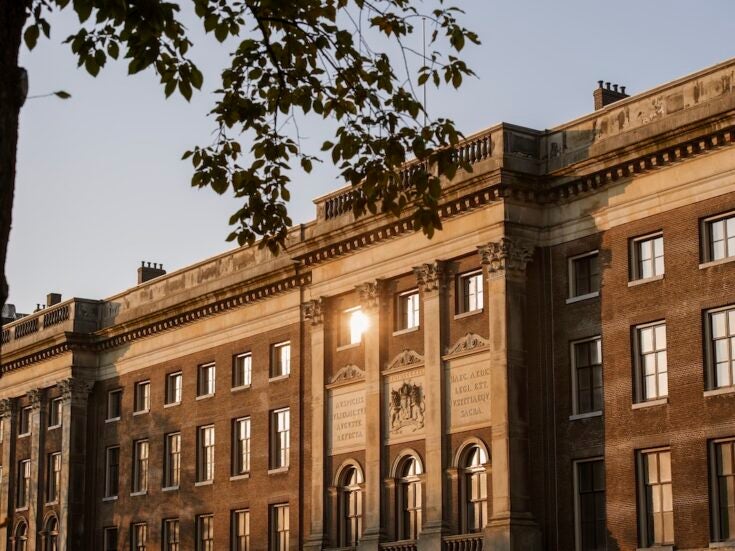
More Than a Feline
Jaguar’s resurgence may be no secret, but William Cash just had to feel it for himself. A month in an XKR convertible duly left him purring for more
FOR SOME YEARS, the once blue-blood Jaguar pedigree was tainted by the ‘Gin and Jag’ image problem. The hedgie and Loro Piana-wearing classes tended to prefer German exhaust fumes to those coming from an engine made in Coventry or Birmingham.
The old stereotype of the Jag driver — typically a Home Counties golf club secretary the wrong side of 50 — was not helped by such devotees as former deputy prime minister John Prescott, still better known not as Lord Prescott but as ‘Two Jags’. Nor was the Jaguar’s iconic image helped by being the car of choice of dodgy car dealer Arthur Daley, who in the Eighties TV series Minder drove a XJ6 and then a square-edged XJ40 with a tank-like 3.6-litre engine.
But Jaguar has now been reborn (with a new, state-of-the-art factory outside Wolverhampton), and any idea that the new XKR is in any way the social (or engineering) inferior of an Aston or Porsche or BMW M6 is risible. I rather doubt Prescott is a Spear’s reader, but if he is thinking of upgrading his old XJS to the new XK series, he’s going to have to start doing a lot of public-speaking engagements to afford a new XKR. Retailing at around £79,000, the car is hardly a poor man’s wheels.
I had my black XKR — convertible — delivered to Belgravia, where it was instantly allocated a prime parking bay by Larry, the porter of the smart Grosvenor Estate block of flats where I was staying. Since there is a waiting list of several years for a parking space, I sensed Larry thought the new Jaguar XKR raised the tone of his parking lot. I hadn’t even made it on to Ebury Street before I realised that looks-wise, this car is a show-stopper.
If the new XKR has some of the looks of an Aston, this is hardly surprising as the car has been designed by Ian Callum, who used to design for Aston Martin. He has introduced a few bold — borderline wide — design touches that enhance the E Type king-of-the-road philosophy that is part of Jaguar’s DNA, including red brake callipers, 20-inch Nevis alloy wheels, a howling chrome exhaust pipe with quad tailpipes and sleek bonnet louvres.

If I have one complaint, it’s that the bumper nose grill on the front is only a few inches off the ground: it may look like a crouched jungle cat about to pounce, but park anywhere close to the kerb and you hear the expensive sound of a new front grill being ordered.
Every detail inside makes the car absurdly relaxed — almost lazy — to drive. I loved the Smart Key System with keyless entry and keyless start. In short, so long as the key fob is somewhere on your body — coat pocket, bottom of the suitcase etc — the car will start at the push of a button.
‘The styling of this car isn’t about image, it’s about true performance. Like other iconic Jaguars before it, the styling has been driven by geometry and aerodynamics for genuine design purity,’ says Callum. ‘If you don’t like the way it looks, you probably won’t like the way it drives either.’
Fortunately, I loved the way the XKR drives. Despite a throaty V8 engine, it has almost effortlessly smooth handling, especially when crawling around the jagged back streets of Chelsea in a vain attempt to avoid the traffic on the Kings Road. It is also surprisingly quiet for a supercharged V8 engine — unless you choose to put your foot down, when the roar is like a Learjet starting up.
The XKR is powered by a 5.0-litre supercharged V8 petrol engine with 510PS that delivers 0-60mph in just 4.6 seconds. This works in conjunction with the innovative ZF 6HP28 six-speed automatic transmission, which features what is called a ‘Sequential Shift’ system’ — using a hockey-style ‘puck’ wheel mounted where the gear stick is usually found to change transmission.
I remember once going to Maranello to drive a Ferrari Scaglietti 612, the classic Ferrari Gran Turismo that is very much a fully paid-up member of the 300kmh club, having a top speed of 315kmh (196 mph). (By the way, the specially limited edition XKR-S model, which I didn’t drive, has been designed to pass 300kmh, should you be interested in joining the club.) But the only problem with the Scaglietti was that while it was heaven on the wide autostradas, its bonnet width made it considerably less fun when you tried to negotiate the medieval back streets of any Tuscan hilltop town.

The Jaguar XKR, however, has more urban credentials and with its ‘Dynamic Stability Control’ system and unique braking system is just as quick and dynamic on the open roads as a grand tourer as it is commuting into town. Luggage space, however, remains a challenge. How the members of the England cricket team (who all get to drive Jaguars) get their bags into the boot, I have no idea.
ONCE I HIT the M40 and headed towards Shropshire, I was able to relax back in the soft grain leather sports seats, which are fitted with a special memory function. Although it was freezing cold, I decided to turn on the heated seats once I reached the M40 and took down the electric roof, with just one push of a button. As the icy wind blew into my face, I switched another button which turned on the heated leather steering wheel. I also loaded up the Bowers & Wilkins premium sound system with some Maria Callas. I lasted until about Oxford, when the roof had to come up again due to suspected frostbite.
I had the car for nearly a month. It is a polymath, excelling in all conditions, making it practical as well as pure-bred. In Top Gear style, I wanted to know whether it was quicker to go from my house near Bridgnorth in Shropshire to Berkeley Square in London by car, or for me to drive from home to Wolverhampton (roughly 35-40 minutes) and then take the train to Euston (one hour 45 minutes) and then another fifteen minutes by tube to central London — a total of around two hours 40 minutes.
Whichever way, by train or car, the journey (which I have been doing regularly for over 25 years as a driver) has never taken less than two and a half hours. That is, until the day I was expected for an awards lunch in Mayfair at the Grosvenor Square Hotel after my house was nominated for a Hudson’s Heritage award. I was going to attend with Adam Dant, the Spear’s cover artist, and I called him at exactly 10.30am on my mobile just as I was driving away from my house along the treacherous single-track lane that stretches for three miles from my house in the hamlet of Upton Cressett until you hit any form of civilisation. To my horror, Adam informed me that the lunch began at 12 and the awards started at 12.30 — in just two hours’ time.
At that moment, I floored the Jag and hurtled along the lane like a Spitfire pilot before take-off. Bridgnorth whirred by in a flash, and within less than 50 minutes I was on the M40, gunning it — eating up swathes of the M40 as the XKR screamed along. As we passed by the Coventry exit and the Midland Heritage motor museum, it was like a ‘fly by’ as the V8 engine produced a monstrous 625Nm torque. The XKR is capable of going over 170 mph.
I reached Berkeley Square by 12.35pm, in just a few minutes over two hours, and with enough time to enjoy a glass of champagne at the reception before sitting down for lunch. This sliced at least half an hour off any previous road record. With the new HS2 train link to Birmingham cutting the train journey down to less than an hour, I doubt going by car — not even a Jaguar — will ever match the new 250mph train in terms of speed. But in terms of arriving in style, give me the Jaguar any day.
William Cash is Spear’s editor in chief






